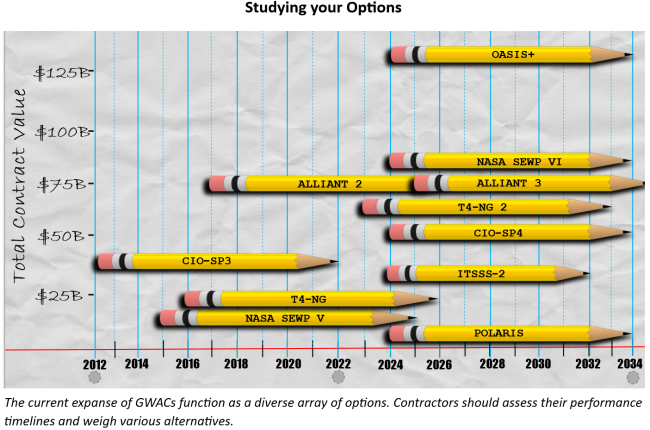Competing for Admissions: Gaining Access to Top Contract Vehicles
- Regardless of the apparent stability of government contract vehicles, every business requires a backup procurement strategy (or two, or three), much like how students need a safety net to catch them when leaping into the competitive world of school admissions
- Even if admission into a particular contract or school appears to be a sure thing, there are no guarantees you will be accepted
- Avoid depending on a single vehicle or GWAC for your revenue; instead, study additional programs containing similar benefits
- Even when the government/school signals its interest in your services/academic record through a contract, it's essential to contemplate the potential consequences of pursuing it
- Subcontracts, joint ventures, teaming arrangements, or study groups can broaden opportunities to areas that individuals might not have initially been capable of accessing
- Diversifying your options and establishing backup contracts and teaming arrangements can mitigate individual risk while increasing complexities
Instability in Vehicle Admissions/Acceptance Processes
When selecting the most suitable schools or vehicles to apply to, understanding the structure, scope, and other risks involved in the procurement can help avoid unnecessary setbacks. The cancellation of Alliant 2’s small business track several years ago serves as a formidable example of why establishing a wide portfolio of potential schools to apply to is important. Many applicants who had centered their focus on this vehicle for IT services, found themselves disappointed and exposed to unnecessary uncertainty and a long gap until Polaris began to take shape. Even to today during the pre-award stage of the Polaris solicitation, protests have been filed and uncertainty is increasing. While unclear, the concern for many is that the new Polaris solicitation could be disrupted just like Alliant 2 was. In the situations where government agencies cancel admission of a particular program, two key outcomes typically occur: students and resources are redirected to different vehicles with the same offerings and, to address the demand for specific services, the obligations are distributed elsewhere. These continued issues regarding the government’s ability to consistently provide successful options underscores the importance of prioritizing additional pathways that offer stability and align with an individual or organization’s needs.
Select Your Top Schools and Have Strategic Backups
Many businesses are aware that recent paths from RFP release to award have become increasingly convoluted with changing timetables, multiple amendments, and significant protests. Even getting to submission isn’t a guarantee that there will be an award – see the recent cancellation of the $5.3B Air Force EC2 vehicle. Students on the EC2 degree path who initially hoped to secure their future engagement (and subsequent revenue stream) selling high value cyber solutions are left to explore alternative options and try to recoup their significant B&P investment. Vehicles and schedules with rolling admissions, such as Seaport NXG and the GSA Multiple Award Schedule (MAS) can be excellent safety schools in these scenarios. Despite the admissions process allowing the government the right to cancel the application process at any time, the disappointment of the contractors who put their valuable resources and time remains evident. Just getting on a contract vehicle in and of itself, as with applying to different schools, is an expensive proposition. Whether you’re a 2-person 8(a) or a 10,000-person large, the cost can easily run $100k, if not significantly more. Despite the expense, contractors continue to apply and invest knowing that these contracts can serve as a primary revenue source and making it increasingly important for individuals to consider multiple contract types for successful procurement. The cost associated with applying to various contracts or schools presents firms with the opportunity to allocate their resources strategically, focusing on institutions where they have a higher likelihood of acceptance.

University Case Study: NASA SEWP VI
Even with Ivy League, best-in-class contracts like NASA SEWP, the procurement process can be unpredictable. While SEWP shows promise for continuing to be labeled as a best-in-class contract vehicle, in its current draft form, it still presents several challenges. Unlike some other contract vehicles, SEWP VI doesn’t impose a limit on the number of students awarded, which may change how some agencies and other schools view it. Additionally, if an individual doesn’t keep their grades up and secure a task order within 12 months of receiving an award, they effectively lose the ability to compete further. Moreover, the introduction of IT service categories has left large IT service providers uncertain about whether their related work will fall within that 12-month period or be pushed to the next semester. With the extensive cost involved for any organization to compete for contracts such as SEWP, the pathway to acquiring work remains uncertain. So even when you ask your college advisor if applying to a specific school will be a worthwhile investment, one simply cannot definitively tell.
Avenues to Admissions: Teaming Arrangements
Contractors considering their options in today’s competitive college landscape for high-value scholarships and contracts can find a variety of pathways to mitigate costs and risks including CTAs, Joint Ventures, and Mentor-Protege Joint Ventures. For instance, Mentor-Protege JVs offer small companies access to the past performance of larger companies, unlocking opportunities they couldn’t access independently for both the large and small firms. CTAs, on the other hand, allow peer companies to combine their unique capabilities to better serve customers. However, despite the multitude of risk-reduction strategies, they can also introduce additional complexities and management challenges. In the highly competitive and uncertain market of procurement, understanding the appropriate amount of attention each application needs can make a significant difference in one’s initial and continued success.
10 Ways to Prepare for Upcoming GWACs
- Stay informed on all major vehicle schedules, familiarize yourself with RFP drafts, and begin identifying back-up schools/strategies in the event you aren’t accepted into your first choice
- Choose a degree path that is in alignment with your current/future capabilities to avoid having to change majors, or worse, getting kicked out of the program
- Use the application evaluation criteria provided in the RFP to determine which completed and/or ongoing projects position you the strongest
- Begin compiling your supplementary materials NOW to identify documentation gaps and reach out to COs before the busy application season starts
- Contact your previous institution/customer for a new, updated copy of your FY23 CPARS transcript
- Ask questions and continue asking until the government answers – it may take multiple rounds of Q&A before you actually receive a clear answer
- Get creative with your strategy and consider finding a teaming partner if you’re unsure whether your grades alone are high enough to meet the threshold
- Attend industry days and watch webinars from agency/sponsored admissions advisors as crucial information is oftentimes provided, as well as additional opportunities for Q&A
- Use advisors, peers, and other “upperclassman.” Consultants with extensive knowledge of the application process, in areas such as benchmarking and teaming arrangements, can help an organization better position themselves for success
- Ensure your immunization records including financial systems, facility clearance levels, and organization certifications are up to date and note that administrative/agency priorities may require new certifications in the future (e.g., sustainability)
Stephen Abernathy
571-409-4189
stephen.abernathy@dwpassociates.com
Andrew Stringer
401-261-0267
andrew.stringer@dwpassociates.com
Fiona Cronin
850-559-6395
fiona.cronin@dwpassociates.com






